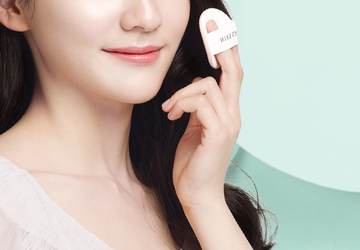While a joyous passage, gestational metamorphosis invariably precipitates a spectrum of pregnancy skin changes. These dermal alterations, ranging from the insidious onset of striae gravidarum to hormonally-induced acneiform eruptions, demand an astute approach to mitigate their aesthetic and physiological impacts. In this discourse, we shall explore the esoteric modalities for managing stretch marks during pregnancy, addressing acne, and instituting a meticulously curated pregnancy skincare routine to safeguard dermal integrity throughout the gravid state.
Endocrine oscillations and corporeal adaptations engender a panoply of pregnancy skin changes during gestation. While distinctive in their manifestation, these dermal phenomena are an intrinsic facet of the gravid experience. The most salient alterations include:

- Striae Gravidarum: Manifesting as linear dermal atrophy with hues ranging from erythematous to violaceous, these are engendered by the abrupt mechanical distension of the integument as it accommodates the expanding maternal anatomy.
- Acneiform Eruptions: The heightened androgenic milieu during pregnancy can potentiate sebaceous hyperplasia, culminating in comedogenic outbreaks even in those devoid of prior acne vulgaris history.
- Melasma: Many gravid individuals may observe hyperchromatic macules, particularly on the facial region, a condition known as melasma or the "mask of pregnancy."
- Telangiectasia and Varicosities: The augmented circulatory demand of gestation can precipitate the prominence of superficial vasculature.
- Xerosis and Pruritus: The dermal stretching associated with gravid expansion can induce xerotic and pruritic conditions, particularly in the abdominal dermis.
A preeminent concern for many expectant mothers is managing stretch marks during pregnancy. While the genesis of striae gravidarum is predicated mainly on genetic predisposition, there exist several prophylactic strategies to attenuate their emergence:
- Diligent Emollient Application: Hydration remains paramount in managing stretch marks during pregnancy. Topical application of humectants and occlusives, such as theobroma cacao, butyrospermum parkii, or prunus amygdalus dulcis oil, can enhance the dermal matrix’s elasticity.
- Hydrosalpinx Suffusion: Adequate hydration augments the dermal turgor from within, potentially mitigating striae formation.
- Micronutrient Fortification: A diet abundant in retinoids, ascorbic acid, and tocopherols alongside trace elements such as zinc and silica fortifies the integumentary system's resilience.
- Kinetic Activities: Regular physical exertion promotes vascular perfusion, enhancing dermal health and modulating gestational weight gain, possibly decreasing the propensity for pronounced striae.
Topical Pharmacopoeia: Formulations designed to manage stretch marks during pregnancy should be considered. Active constituents such as hyaluronic acid, medically sanctioned retinoids, and Centella Asiatica are known to bolster dermal elasticity and diminish the visibility of striae.
Another pervasive dermal affliction amidst pregnancy skin changes is acne. The endocrinological perturbations intrinsic to pregnancy can exacerbate seborrheic conditions, necessitating a targeted approach:
- Subtle Dermal Cleansing: Utilize a non-aggressive, non-comedogenic cleanser to purify the epidermis bi-daily—Eschew abrasive exfoliants, which may exacerbate the inflammatory process.
- Avoidance of Teratogenic Topicals: Conventional anti-acne formulations often contain salicylic acid, benzoyl peroxide, and retinoids, all of which are contraindicated during pregnancy. Instead, opt for dermatologically vetted products safe for gestational use.
- Prophylactic Moisturization: Even seborrheic skin requires hydration. Select a non-occlusive, lightweight moisturizer to maintain epidermal moisture balance without occluding the pilosebaceous unit.

- Dermatological Consultation: Should acne become recalcitrant, it is prudent to seek expert advice. A healthcare provider may prescribe gestation-compatible pharmacotherapeutics to manage the condition.
A carefully formulated pregnancy skincare routine is indispensable in navigating pregnancy skin changes and preserving dermal vitality. Here is an intricate guide to tailoring a regimen that caters to gravid-specific dermal exigencies:
- Mild Dermal Purification: Commence with a hypoallergenic, non-fragrant cleanser that effectively eradicates impurities whilst preserving the skin’s protective lipid barrier.
- Periodic Desquamation: Engage in gentle exfoliation once or twice weekly using mild agents such as colloidal oatmeal or lactic acid, congruent with gestational safety parameters.
- Dermal Hydration: Integrate a hydrophilic serum or moisturizer daily. Ingredients like sodium hyaluronate, glycerol, and aloe barbadensis are exemplary for maintaining dermal moisture content.
- Photoprotection: Applying a broad-spectrum photoprotective agent is a non-negotiable component of any pregnancy skincare routine. An SPF of at least 30 is advisable to shield the epidermis from ultraviolet-induced exacerbation of hyperpigmentation.
- Avoidance of Noxious Compounds: Eschew products laden with retinoids, salicylic acid, and benzoyl peroxide, opting instead for those explicitly labelled as safe for gestation.
- Regimen Adherence: Consistency in following the skincare regimen is crucial to attaining and sustaining optimal outcomes.
In addition to a meticulously crafted pregnancy skincare routine, there are supplementary strategies to ameliorate pregnancy skin changes further and uphold dermal health:
- Nutritive Equilibrium: Consuming a diet teeming with phytochemicals, micronutrients, and essential fatty acids is fundamental in supporting the skin's structural and functional integrity.
- Hydration Optimization: Adequate water intake is pivotal for maintaining dermal hydration and plasticity, which can lessen the appearance of striae and confer a rejuvenated complexion.
- Somnolence and Reparative Rest: Securing 7-8 hours of sleep each night is vital for overall physiological homeostasis, including the skin’s reparative and regenerative processes.
- Psychological Equanimity: Gestational stress can harm dermal health. To maintain mental and physical equilibrium, employ stress-reduction techniques such as mindfulness meditation, controlled breathing exercises, or prenatal yoga.
For those navigating the labyrinth of pregnancy skin changes, integrative skincare practices offer a confluence of internal and external harmonization. These practices underscore the symbiotic relationship between holistic well-being and dermatological health.
- Therapeutic Aromatherapy: Essential oils such as neroli, rosehip, and frankincense can be seamlessly incorporated into a pregnancy skincare routine through the judicious application of specific dilutions. These oils possess profound skin-regenerative properties while also fostering emotional equilibrium.
- Nutraceutical Adjuncts: Beyond mere dietary supplements, nutraceuticals such as astaxanthin, hyaluronic acid, and CoQ10 provide systemic support to the skin’s structural matrix, rendering them invaluable for managing stretch marks during pregnancy and other gestational dermatological perturbations.
- Bioenergetic Skincare: This avant-garde approach leverages the body's electromagnetic fields to enhance the efficacy of topical treatments. Bioenergetic devices optimize cellular function and address multifaceted pregnancy skin changes when used with tailored skincare regimens.
The gestational period is a prelude to the equally critical postpartum phase, where continued vigilance in skin care is imperative to mitigate residual pregnancy skin changes. A meticulously devised prophylactic regimen ensures an unblemished transition into the postpartum phase.
- Transdermal Nutrient Infusion: Leveraging transdermal delivery systems, postpartum skincare can be enhanced by infusing nutrients directly into the epidermis. Ingredients like ascorbic acid, glutathione, and peptides facilitate skin recovery and maintain a radiant complexion.
- Prophylactic Anti-Inflammatory Protocols: To preempt postpartum flare-ups of conditions like melasma or eczema, consider incorporating anti-inflammatory ingredients such as centella asiatica, calendula, and bisabolol into your pregnancy skincare routine.
Navigating the arcane intricacies of gravid dermal metamorphosis can be formidable, yet with sensible methodologies and insight, one can sustain epidermal effulgence and resilience throughout the gravitic continuum. By assiduously addressing the nuances of striae gravidarum, combating gestational acne, and implementing an exhaustive, synecdochic skincare protocol, these cutaneous vicissitudes can be adroitly ameliorated, thereby ensuring unwavering confidence in one's integument during this paramount epoch.


